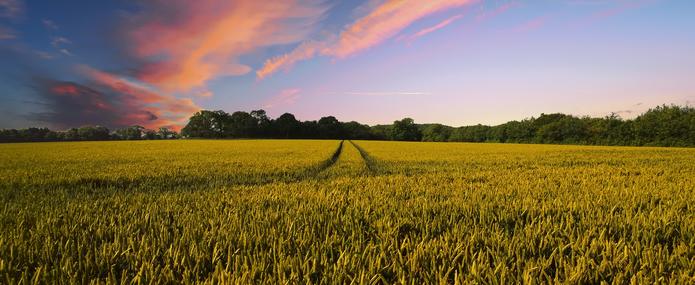The warning signs, especially in terms of health and the environment, indicating the need for a transition within the European agri-food system, have been accumulating for several years. The “Ten Years for Agroecology in Europe” (TYFA) scenario developed jointly by IDDRI and the consultancy firm AScA, in collaboration with a scientific council composed of leading researchers, shows that a fully agro-ecological Europe, free from synthetic inputs and based on the redeployment of natural grasslands and the extension of agro-ecological infrastructures (hedges, trees, ponds, stony habitats), could sustainably feed 530 million Europeans by 2050.
The agricultural hypotheses tested by this prospective analysis comparing the current situation with a scenario for 2050 raise a number of questions for scientific research, for example on the level of production; they also call for discussions regarding the policy challenges involved in implementing such a transition
A fully agro-ecological Europe [...] could sustainably feed 530 million Europeans by 2050
Towards more sustainable food
The TYFA project explores the feasibility of and conditions for generalising agroecology, based on abandoning pesticides and synthetic fertilisers, and redeploying extensive grasslands and landscape infrastructures, in order to tackle the challenges facing the European food system today in a coherent manner: moving towards more sustainable food for Europeans, protecting biodiversity and natural resources, and mitigating climate change.
The first elements of the TYFA project, presented to the public on Thursday 13 September 2018 at AgroParisTech, concern the agricultural and dietary feasibility of the scenario: to what extent can the agri-food hypotheses set out in TYFA effectively meet the needs of all Europeans by 2050, given the agricultural land available? With what consequences for the food trade between Europe and the rest of the world?
The development of an original model, systemically comparing agricultural production and its uses—both food and non-food—, modes of production and land use, is used to quantify the implications of an agro-ecological scenario for 2050.
Study September 2018 Read also An agroecological Europe in 2050: multifunctional agriculture for healthy eatingThis scenario combines hypotheses regarding the generalisation of agroecology, the suspension of plant protein imports, and the adoption of more healthy diets—fewer animal products, but more fruit, vegetables and fibre, consistent with recommendations by the European Food Safety Authority (EFSA). Unlike many similar prospective studies, the TYFA scenario centres the agro-ecological system on the redeployment of natural grasslands and the associated extensive farming of cattle (and, to a lesser extent, of sheep and goats). Despite an induced decline in production of 35% compared to 2010 (in kcal), this scenario:
- feeds Europeans healthily while maintaining export capacity;
- reduces Europe’s global food footprint;
- results in a 40% reduction in agricultural GHG emissions;
- and helps to restore biodiversity and to protect natural resources.
What are the implications for TYFA?
In addition to the need to evaluate the socio-economic implications of generalising agroecology in Europe—this is the next phase of the TYFA project, on which the team is already working—the TYFA scenario raises a number of questions for research and policy—this is its main purpose.
The decline in production
In terms of research, one of the key questions refers to the issue of production—or more specifically the decline in production—envisaged in TYFA. Indeed, the scenario uses the yield values observed today in organic agriculture to quantify the production levels in 2050, and starts from the premise that advances in research—in genetics and plant breeding, as well as in crop and herd management—will offset the effects, seen as negative, of climate change. However, stepping up agro-ecological research, making it possible, for example, to regionalise plant breeding and crop management techniques according to pedoclimatic conditions, could succeed in limiting the decline in production. The challenge is then to further specify the gains in production that could reasonably be expected from such research efforts, but also to determine how to redirect public funds to this effect.
Engaging actors and alignment of the sectorial policies for a sustainable food
In terms of policy, TYFA raises the question of the mobilisation of actors. That the generalisation of agroecology should appear as a credible option at the agri-food level is one thing. But actually engaging actors—producers, consumers, manufacturers, policymakers—in this transition is another, involving a multitude of decisions, which are themselves governed by numerous sectoral policies that currently lack coherence: agricultural policy, of course, but also trade, land, health, environmental and industrial policies. Identifying the drivers and obstacles to the alignment of these policies in order to address the issue of sustainable food for Europeans1 is a major challenge.
The proposal by IPES-Food for a European food council, involving all stakeholders and operating down to the smallest territorial levels, which could foster such alignment through the definition of a common food policy, seems to be an important avenue to explore in this respect.
- 1In other words, according to FAO, “diets with low environmental impacts which contribute to food and nutrition security and to healthy life for present and future generations. Sustainable diets are protective and respectful of biodiversity and ecosystems, culturally acceptable, accessible, economically fair and affordable; nutritionally adequate, safe and healthy; while optimizing natural and human resources”


